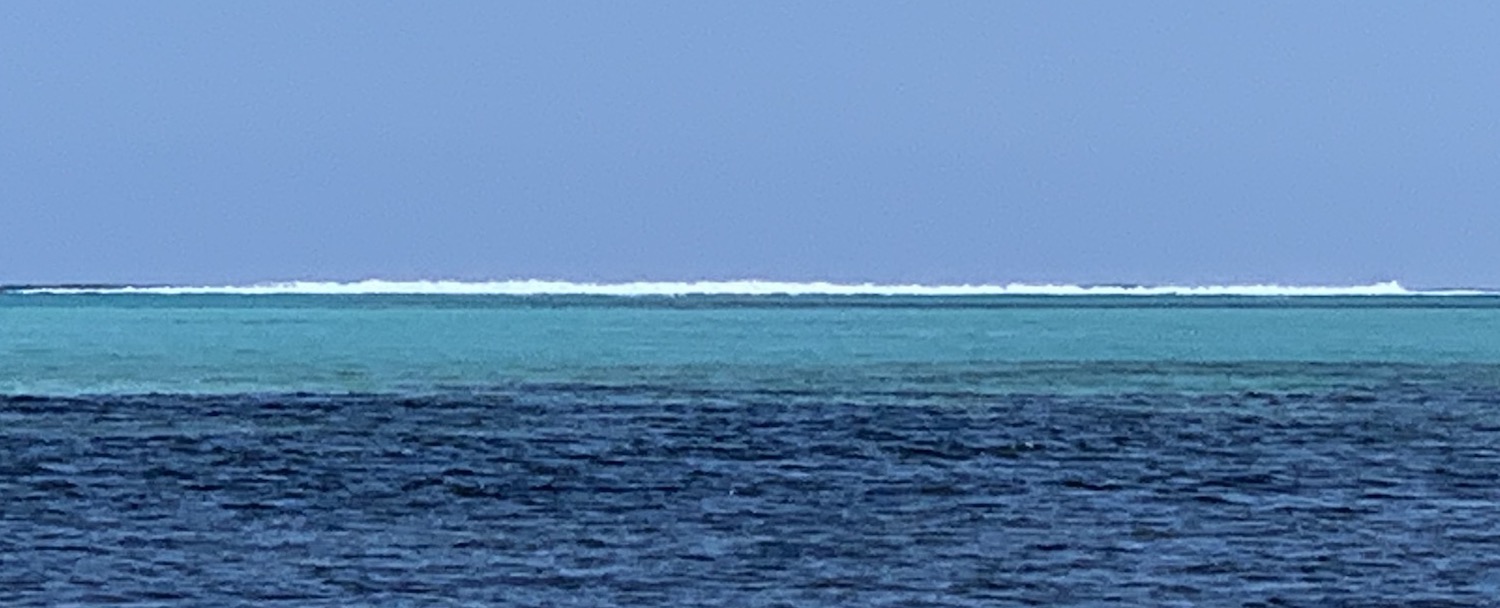When I remember Melanesia, the first thing I think of is the colour turquoise. Especially the ocean. Then blue: the sky. Then white: the beaches.
Apart from a few Australians and New Zealanders, and handfuls of westerners in Fiji, really not many visitors make the effort to explore what is surely everybody’s idea of tropical paradise. You will come across almost no Europeans or Americans who don’t live and work in the region. Yet Papua New Guinea, the Solomon Islands, Vanuatu and New Caledonia also offer different exotic experiences not to be missed.
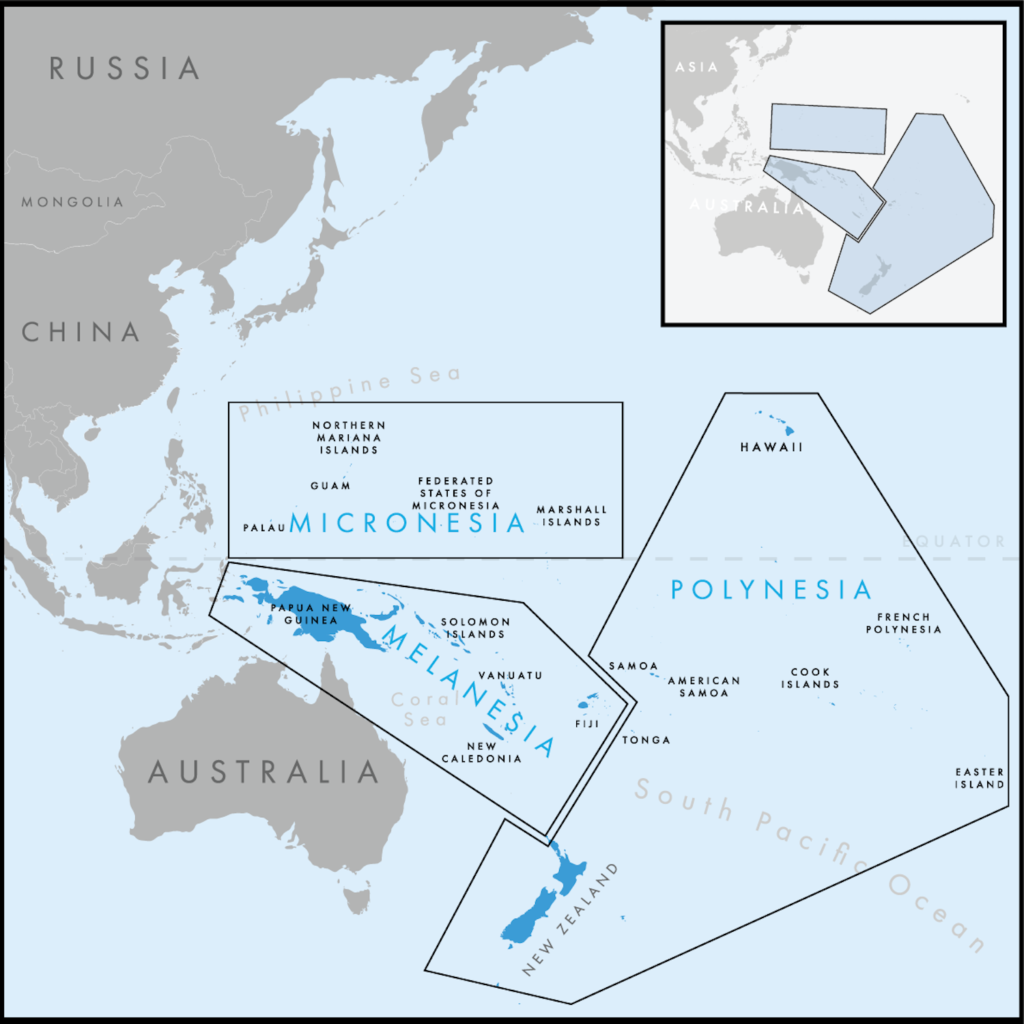
Melanesia is a sub-region of Oceana, directly under Micronesia. It is almost entirely below the equator, running from the north to the east of Australia, north of New Zealand. With Polynesia further to the east, it forms the west part of the South Pacific.
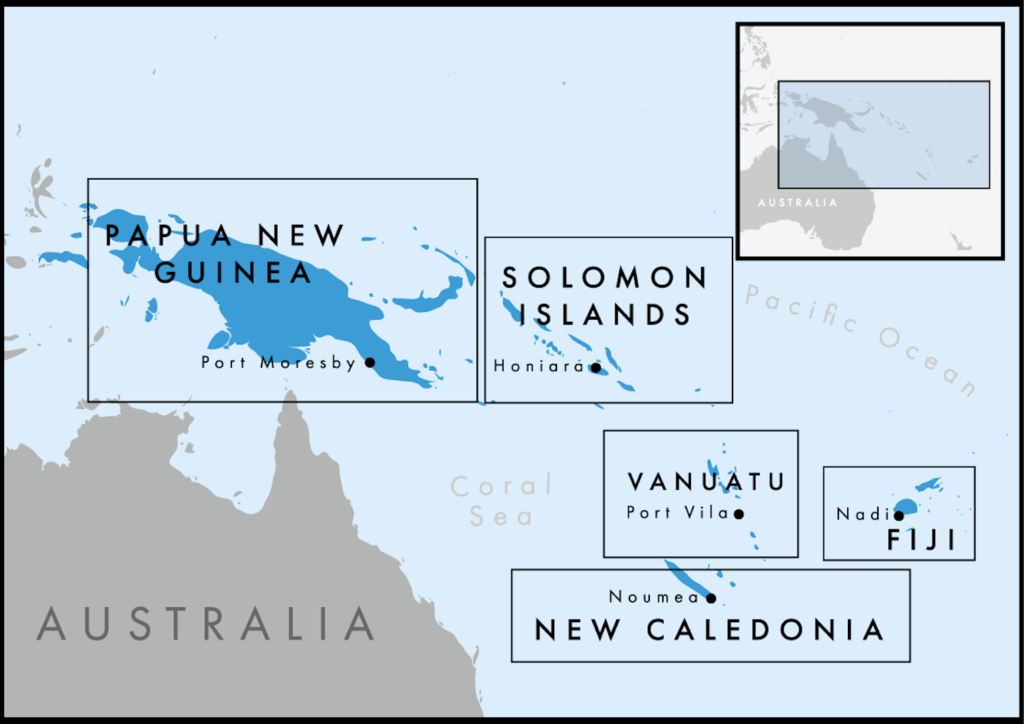
Of course the idyllic passage, in fact often the only way, to reach many of the outlying islands is by yacht, and it is easy to see why people retire to sail between these remote utopias for months on end. However, these reviews focus on the major sites, and their nearby attractions, that are mostly connected by local aircraft and commercial boats of various kinds, and they are all more than gorgeously turquoise enough.
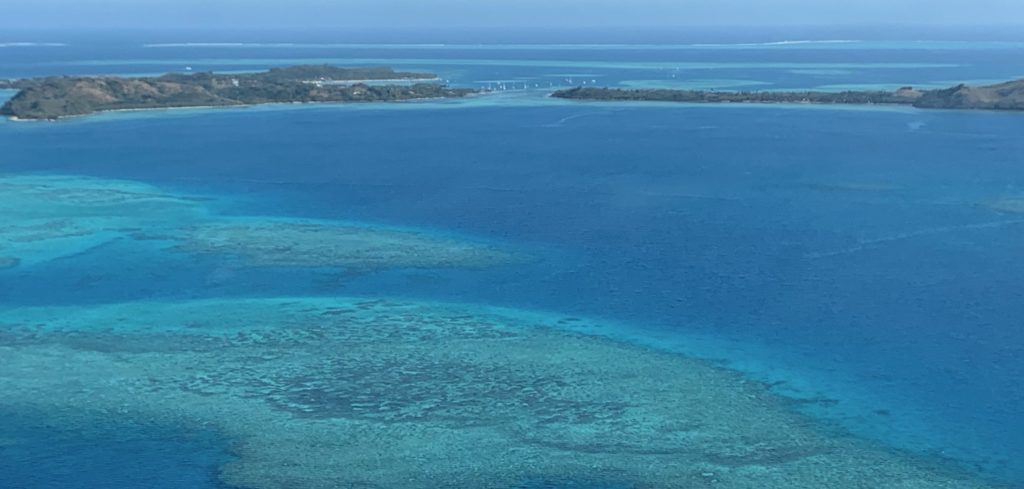
Melanesia is a much less politically coherent or culturally connected group of territories than Micronesia. In fact, it is hard to find a unifying thread, or even very much in common.
In the nineteenth century they were all invaded by Christian missionaries and formally colonised by European powers that had been present since the voyages of discovery by James Cook and others in the 1770s: Britain took over Fiji in 1874, Papua New Guinea in 1884 and most of the Solomon Islands in 1893; Germany seized parts of the Solomon Islands in 1886 and France annexed New Caledonia in 1853; in a highly unusual arrangement, Britain and France together shared sovereignty over the New Hebrides, today’s Vanuatu, from 1906.
Except New Caledonia, these countries finally won independence a century or so later: Fiji in 1970, Papua New Guinea 1975, the Solomon Islands 1978 and Vanuatu 1980. In New Caledonia, a steady transition of powers to a local authority began in 1998 but a referendum on independence in 2018 voted 56%-44% % to remain French, though a further plebiscite is expected in the next few years.
New Caledonia is culturally very French. It is also the richest of the Melanesian islands thanks to the discovery of nickel. Noumea, the capital, feels like a wealthy and sophisticated city you would find in France. There are tarmac roads, modern architecture, office clothing, French high end fashion brands, French restaurants, and French attitudes.
Vanuatu and Fiji both have a mix of modern and traditional. Their cities have good quality visible public infrastructure, including roads with plenty of new cars on them. But they also have terrible poverty and villagers with ancient customs and traditional subsistence living. In Vanuatu in particular, land ownership and political power rests largely with tribal chiefs, who help to maintain a kastom regime of ancient rituals. Ni-Vanuatans and Fijians also drink lots of kava, an intoxicating brown sludge extracted from a pepper plant, popular in some other parts of the South Pacific.
The poison in the Solomon Islands is not a drink, it is the betel nut, which is chewed and spat, splashing streets all over the country with a bright red stain. Solomon Islanders are very poor and along with Fijians glory in the South Pacific tradition of wearing garish shirts and dresses. Here, there is no 3G and very little wifi.
Physically, the peoples look very different too, despite sharing a Melanesian heritage. For instance, Solomon Islanders tend to be very dark skinned, while Fijians appear more heavily set, like Polynesians.
Music is most evident in the Solomon Islands, Vanuatu and New Caledonia, where reggae and, surprisingly, country and western music will be heard in bars and taxis. Not always just the global classics either, but often a local take, in a local dialect, or in French in New Caledonia.
Even the climate is different across the region. It is of course hottest in the Solomon Islands, closest to the equator, and coolest in New Caledonia, which is only just inside the Tropic of Capricorn. The best time to visit any of these islands is their dry season, which is usually winter, though even that varies from place to place.
One common factor is that you will usually see blue skies, unstreaked by aeroplane pollution, so rare are flights even passing by this remote part of the world. Another is the waining influence of Europe and America and the rise of China across the region, as a trading partner and an investor in the local economies. But the real bond is the colour turquoise.

The Solomon Islands is the least visited of the Melanesian islands and has the least infrastructure for travellers. But there is an authentic local culture, largely untainted by tourism or modern development, that is charming and revealing. The central islands of Guadalcanal and Tulagi, either side of a 40km-wide channel turquoise at the edges, were the battleground of a major confrontation between American and Japanese forces in 1942. This channel is now known as Iron Bottom Sound because of the scores of shipwrecks and planewrecks that haunt the seabed. It is this that attracts intrepid scuba divers.
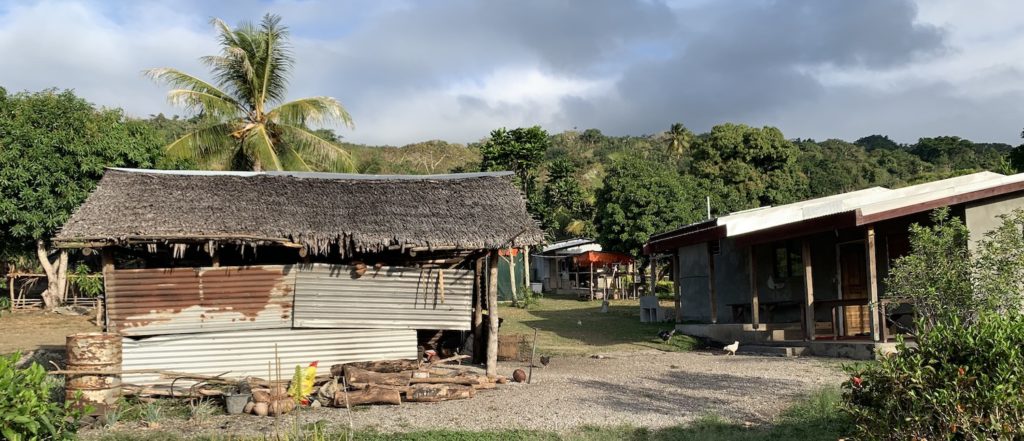
Vanuatu is the disappointment of Melanesia. It has some outstanding attractions, notably Mount Yasur on Tanna in the far south, where you can peer over the lip of a volcano that erupts several times every hour of every day and see the molten lava bubbling red hot just 400m below. There is also the SS President Coolidge on Santo, three-quarters of the way up the archipelago, a gigantic American luxury ocean liner that usually rates in the world’s top five wreck dives. Plus there is the opportunity to interact with traditional chiefs and villagers who still live by ancient customs, even on the main island of Efate. But with such natural beauty all around – this, after all, was the inspiration for Bali Hai in Rodgers and Hammerstein’s iconic South Pacific musical – I could not help feeling that more could be made of their beaches, which are white, and their ocean, which is of course turquoise.
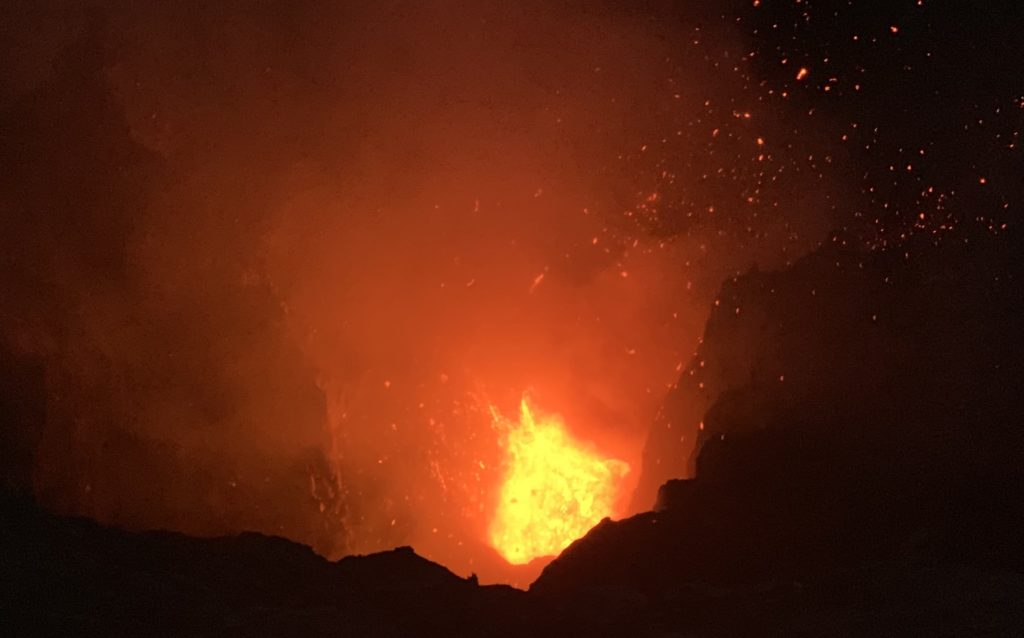
New Caledonia, by contrast, is for me the surprise package of Melanesia. It is quite simply one of the most beautiful places on earth. The major landmass of Grand Terre is covered in handsome mountains, not unlike the Scottish Highlands. And it is encircled by a coral reef that forces the waves to break in a brilliant white line and creates the turquoisest lagoon all the way around the coast. This UNESCO-protected lagoon is best seen from a microlight, which will also take you over the Heart Of Voh, an unusual land formation famous in aerial photography. On top of all that, there are world class beaches, with soft sand like flour, on small islets off Grand Terre as well as major destinations Ile des Pines down south and the Loyalty Islands out east.
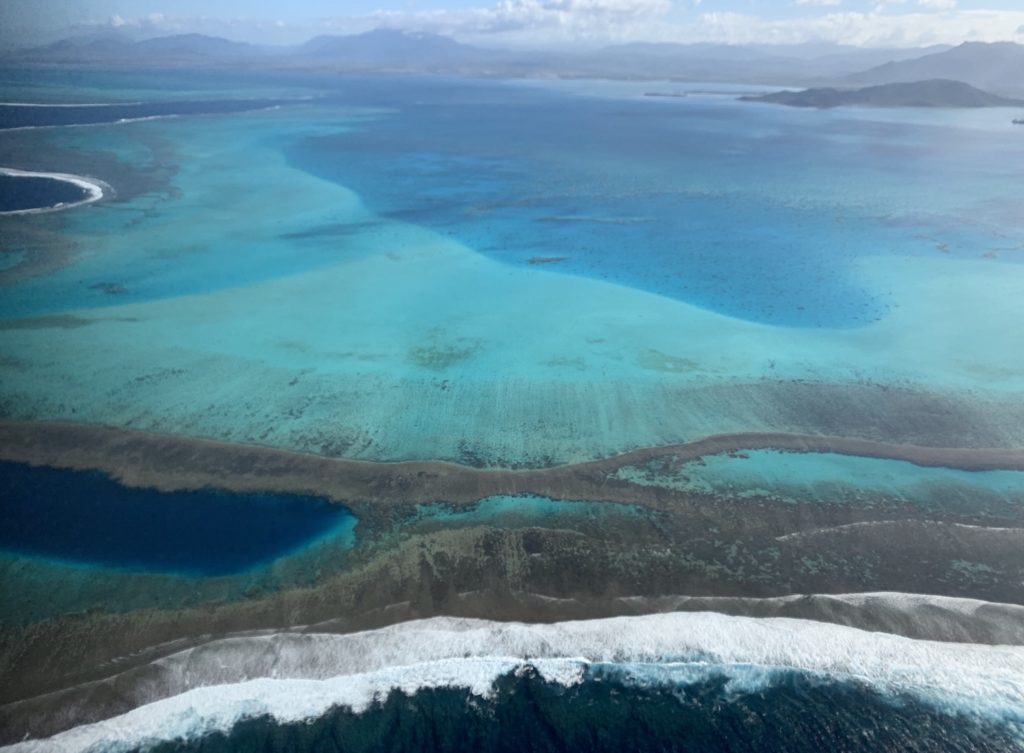
Fiji is the most well known, and most visited of the Melanesian islands. The tourist industry is aimed primarily at Australian and New Zealand package tourists not freewheeling independent spirits, but with a bit of effort you can find seclusion among stunning land and seascapes. The highlights are in the Mamanuca and Yasawa archipelagos to the north-west of the main base of Viti Levu, brochure ready paradise islands amid the endless turquoise. In addition, Fiji is famous among divers for trips to watch huge bull sharks being fed.

There is access to all these countries from Australia and New Zealand, but we started in Port Moresby in Papua New Guinea and hopped south and east with the relevant local carriers. For reviews on each country, please see:
